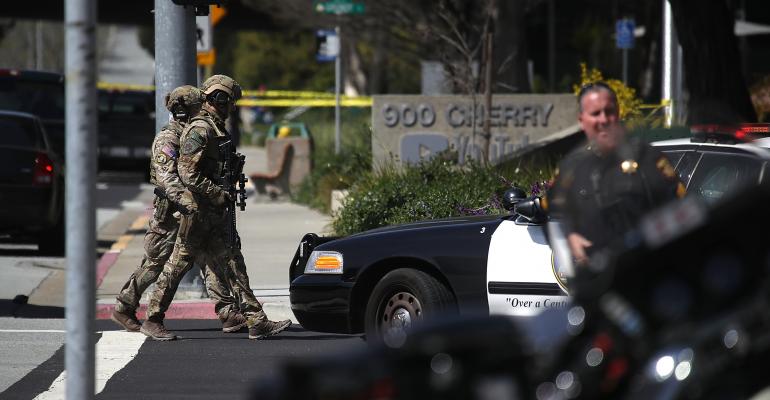The shooting last week at YouTube’s headquarters, in San Bruno, Calif., 12 miles south of San Francisco, underscored the unique challenges suburban office parks—which are increasingly becoming a focus of investor interest—may have to secure their premises.
“Those types of environments are very difficult to control because they were designed for ease of access,” says Sean Ahrens, a security consultant and market group leader with Affiliated Engineers Inc., a multi-discipline technical consulting firm.
Nasim Najafi Agham, a 38-year-old YouTuber, walked onto YouTube’s campus through a parking garage and opened fire at a nearby outdoor patio. She injured three people with gunfire before fatally shooting herself. In the wake of the shooting, there has been talk about how the laid-back nature of technology firms may make their offices harder to secure.
The incident also highlighted the difficulty of securing every entrance that may exist in a suburban office complex. These types of properties tend to stretch over large areas and feature big parking areas, and sometimes multiple buildings. A sky-high office tower in the middle of a city may have just two entrances (the main and back) that need cameras and security, but suburban offices have more areas in need of control, notes Charles Shepherd, CEO of Las Vegas-based Readiness Resource Group, a security consulting firm.
Still, even without the latest security technologies or a force of security guards roaming every inch of a corporate campus, there are basic actions companies can and should take to protect workers. “Communication and training is an extremely big part of preventing this from occurring,” Ahrens says.
This can range from workers reporting odd or suspicious behavior to their company, or keeping open lines of communication among different tenants in multiple buildings. Shepherd suggests having training sessions at property-wide monthly meetings to emphasize the need to share alerts and information among campus’ tenants. “The biggest thing that they can have is open communication between everything,” he notes. He compared it to a neighborhood watch group, or a gated community. “You want to know what’s going on in your complex,” Shepherd says.
In addition, even at large corporate parks, where there may be dozens of tenants, tenants need to embrace security on their own. “For these types of facilities, it begins at the tenants’ front door,” Ahrens says.
He suggests that companies in such buildings consider compartmentalizing their space—siphoning off the reception or waiting area from where workers sit—to delay an attacker from reaching his or her target.
How far a tenant firm goes to improve security ultimately rests on the company’s willingness to prepare for various scenarios, Shepherd says. For example, in spite of numerous mall shootings, there have not been laws or rules adopted to standardize the required level of protection for such facilities, he notes.
While news of lone active shooters may feel like a distant threat, Ahrens and Shepherd stress the importance of preparing for the worst. “We have to recognize the 1 percent can happen, and we have to be prepared for that 1 percent,” Ahrens says.

